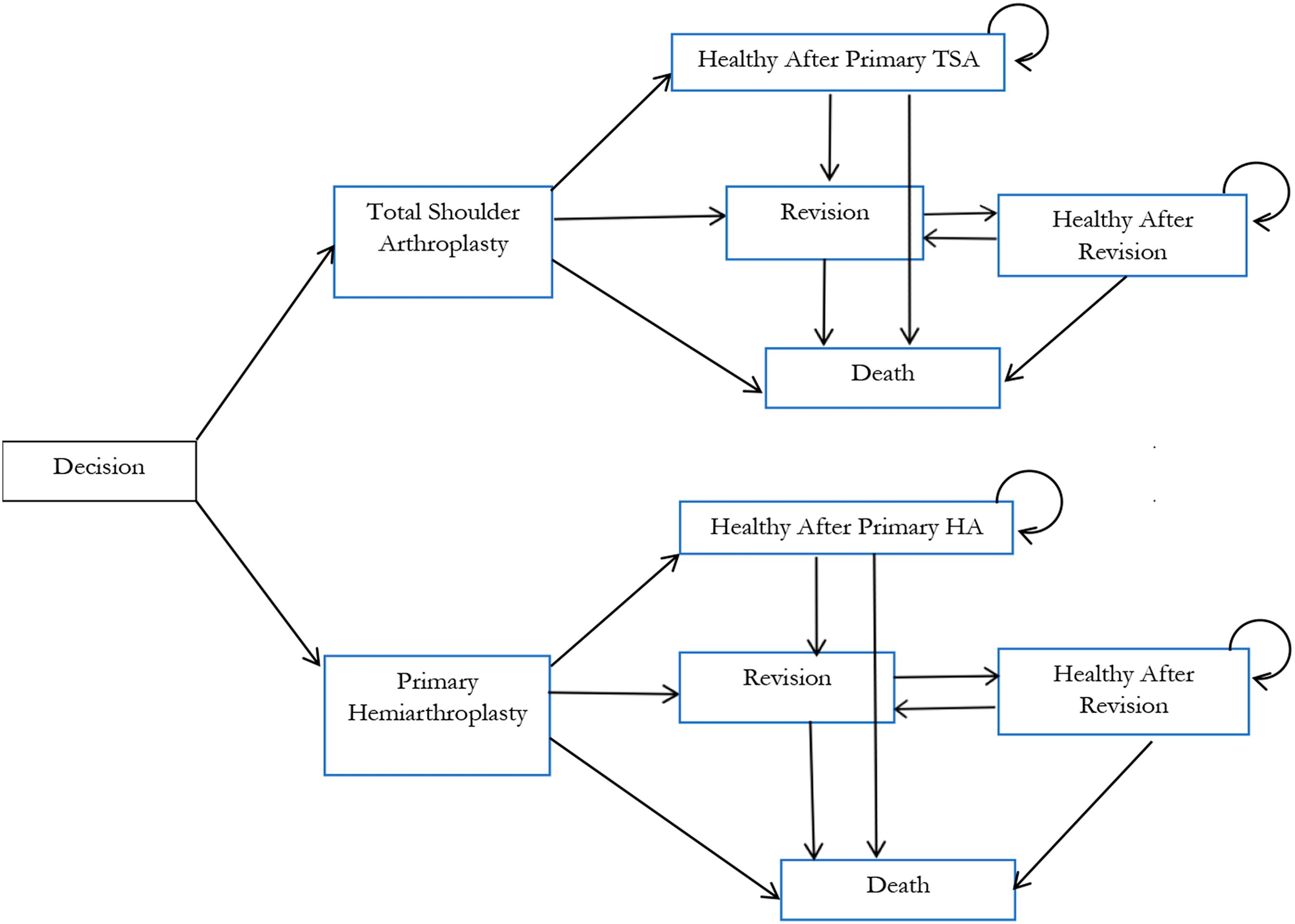In a new study reported in JBJS, Lapner et al. conducted a cost-utility analysis of total shoulder arthroplasty (TSA) versus hemiarthroplasty from the perspective of Canada’s publicly funded health-care system. They used a Markov model to simulate the costs and quality-adjusted life-years (QALYs) for patients undergoing either TSA or hemiarthroplasty over a lifetime horizon to account for costs and medically important events over the patient lifetime. Subgroup analyses by age groups (≤50 or >50 years) were also performed.
Discussing their findings, the authors note:
Our analysis demonstrated that TSA was more cost-effective compared with hemiarthroplasty. This study involved a large cohort of patients (5,777) who underwent TSA or hemiarthroplasty. The data demonstrate that, despite the additional initial cost of TSA implants, health-care utilization postoperatively was greater for hemiarthroplasty compared with TSA and utility scores for hemiarthroplasty were inferior. Our findings can help inform both clinical decision-making as well as health-care policy with respect to these treatments.”
Click here for the full JBJS report.



